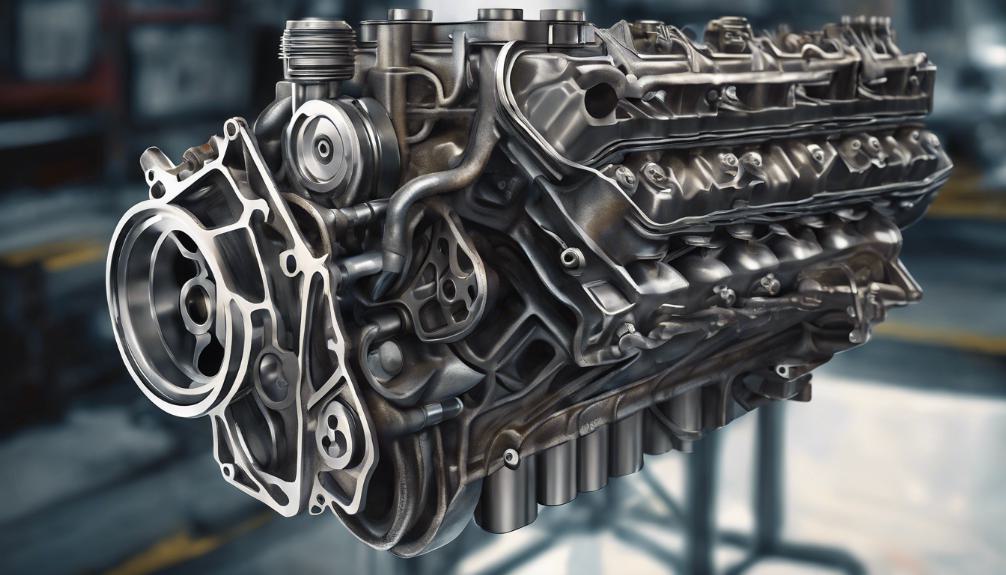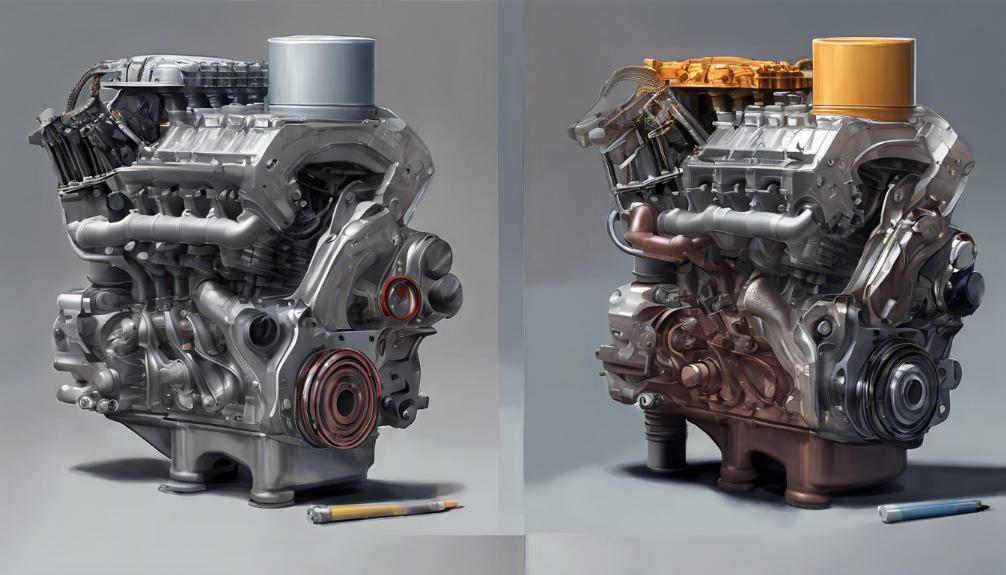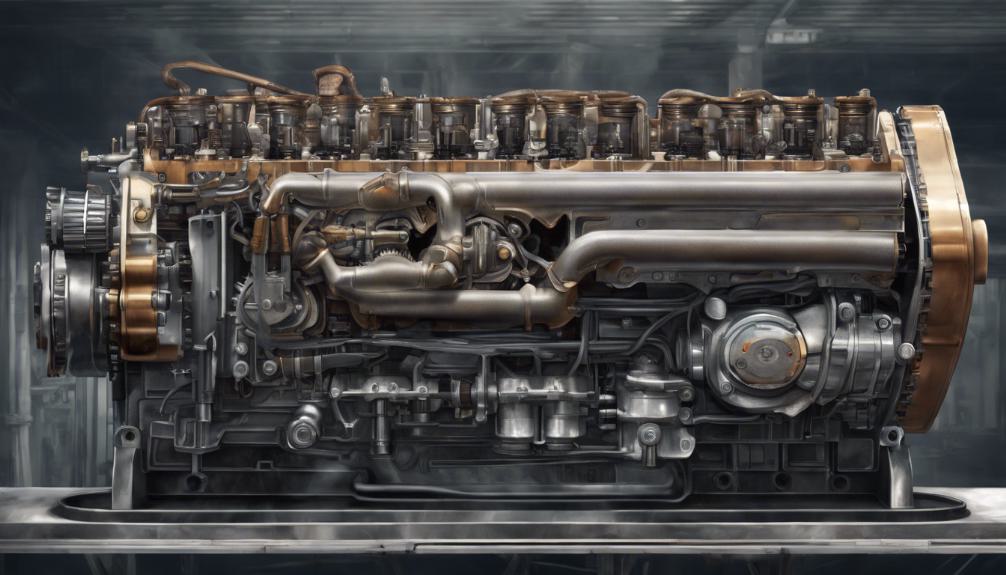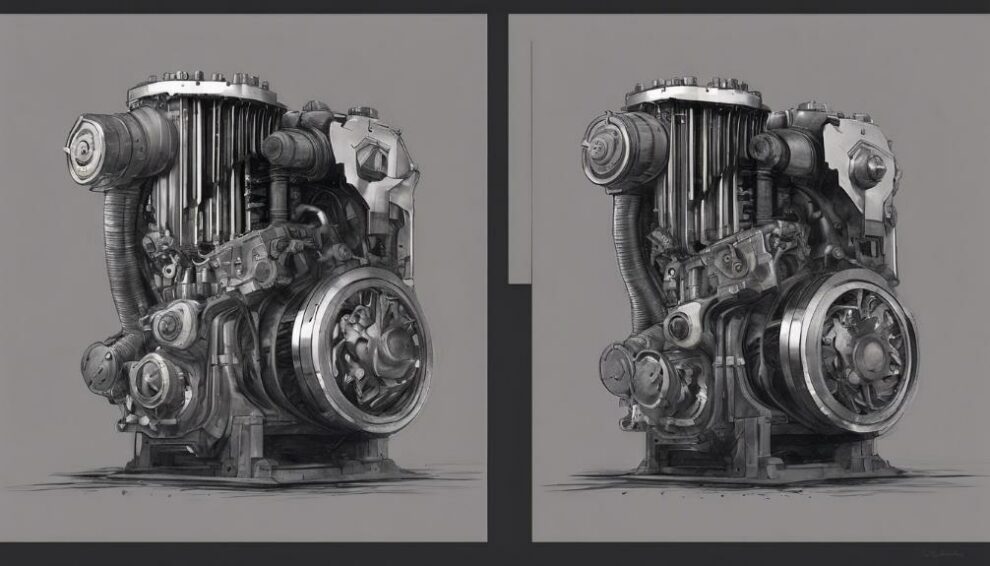When deciding between short block and long block engines, remember the key differences. Short blocks offer piston customization for specific needs.
Long blocks, including essential components like the cylinder head and valve train, are pre-assembled for reliability.
Short blocks allow power output adjustments, while long blocks prioritize ease of installation. Budget-wise, short blocks are usually more cost-effective but may require additional parts.
Long blocks come complete but at a higher price. Your choice depends on your customization preferences and maintenance expectations. Understanding these variances is important for aligning your engine selection with your goals.
Dig deeper for a clearer understanding.
What You Need to Know
- Short blocks allow customization for tailored power outputs.
- Long blocks offer pre-assembled components for reliability.
- Short blocks are budget-friendly with customization options.
- Long blocks save time with essential parts pre-installed.
- Consider compatibility, maintenance, and customization needs when choosing between short and long blocks.
Key Components of Short Block Engines

Understanding the key components of short block engines is essential for anyone interested in engine assembly and customization.
When it comes to piston options, short block engines offer a range of choices to suit your specific needs. Different piston designs can impact engine performance, fuel efficiency, and overall power output.
Whether you’re looking for forged pistons for high-performance applications or cast pistons for a more budget-friendly build, short block engines can be customized to meet your requirements.
Crankshaft customization is another important aspect of short block engines. The crankshaft plays a significant role in converting the linear motion of the pistons into rotational motion, powering the vehicle.
Short blocks allow for customization of the crankshaft, enabling you to select the right stroke, material, and balancing options for your engine build.
By choosing the appropriate crankshaft specifications, you can optimize torque, horsepower, and engine balance to achieve your desired performance goals.
Understanding these key components will help you make informed decisions when assembling and customizing your short block engine.
Components Included in Long Block Engines
Long block engines typically comprise the engine block, pistons, crankshaft, cylinder head, valve train, and camshaft.
In addition to these essential components, long block engines may also include parts like the oil pan, valve covers, and water pump.
However, it’s important to note that long block engines don’t come equipped with fuel systems, exhaust manifolds, intake manifolds, or electrical components.
The cylinder head plays a critical role in housing the valves and ensuring proper airflow within the engine.
The valve train, which consists of components like the valves, lifters, pushrods, and rocker arms, controls the opening and closing of the valves to facilitate the combustion process.
Long block engines offer a more all-encompassing solution compared to short block engines, making them suitable for straightforward engine replacements without the need for extensive customization.
When considering a long block engine, it’s essential to understand the components included to guarantee compatibility with your vehicle’s specific requirements.
Performance and Assembly Variances

When looking at Performance and Assembly Variances between short and long block engines, the focus shifts to the intricacies of engine customization and installation processes. Here’s what you need to know:
- Tuning options, reliability factors: Short block engines offer enthusiasts the ability to fine-tune their engine performance with specific crankshafts, pistons, and internal components, allowing for tailored power outputs.
On the other hand, long block engines come with pre-assembled components like cylinder heads and camshafts, which can enhance reliability due to factory-calibrated specifications.
- Power potential, maintenance requirements: Short block engines provide greater flexibility for achieving high-performance setups by enabling the selection of performance parts based on individual preferences.
Long block engines, with their all-inclusive components, offer a plug-and-play solution that may require less maintenance and are suitable for those seeking a ready-to-install option.
Understanding these variances can help you decide which engine type aligns best with your performance goals and maintenance preferences.
Budget Considerations for Engine Blocks
Considering your financial constraints, evaluating the budget implications is crucial when deciding between a short block and a long block engine.
Short blocks are often a more budget-friendly option compared to long blocks. The cost comparison between the two reveals that long blocks are generally more expensive due to their completeness.
However, short blocks can be an attractive choice for those looking to customize their engine while keeping costs in check.
It’s important to note that while short blocks may initially seem more affordable, they could require additional parts and labor, impacting the overall budget in the long run.
When weighing your options, take into account not only the upfront cost but also potential customization options and any additional expenses that may arise.
By carefully considering these factors, you can make an informed decision that aligns with both your budget and your engine customization needs.
Choosing Between Short and Long Blocks

To make an informed decision between short and long blocks, evaluate your customization needs and installation preferences. When choosing between short and long blocks for your engine build, consider the following:
- Customization Options: Short blocks offer more flexibility for customization since they come with fewer pre-assembled parts, allowing you to select specific components tailored to your performance goals.
On the other hand, long blocks provide a more complete package with additional parts like cylinder heads and camshafts, saving you time on assembly.
- Compatibility Issues: Make sure that the block you choose is compatible with the rest of your engine components.
Long blocks are more straightforward regarding compatibility since they come with essential parts pre-installed, while short blocks may require more attention to ensure all components work together seamlessly.
- Maintenance Tips: Regardless of your choice, regular maintenance is essential to ensure the longevity and best performance of your engine.
Follow manufacturer guidelines for oil changes, part inspections, and tune-ups to keep your engine running smoothly.
As an Amazon Associate we earn from qualifying purchases.










